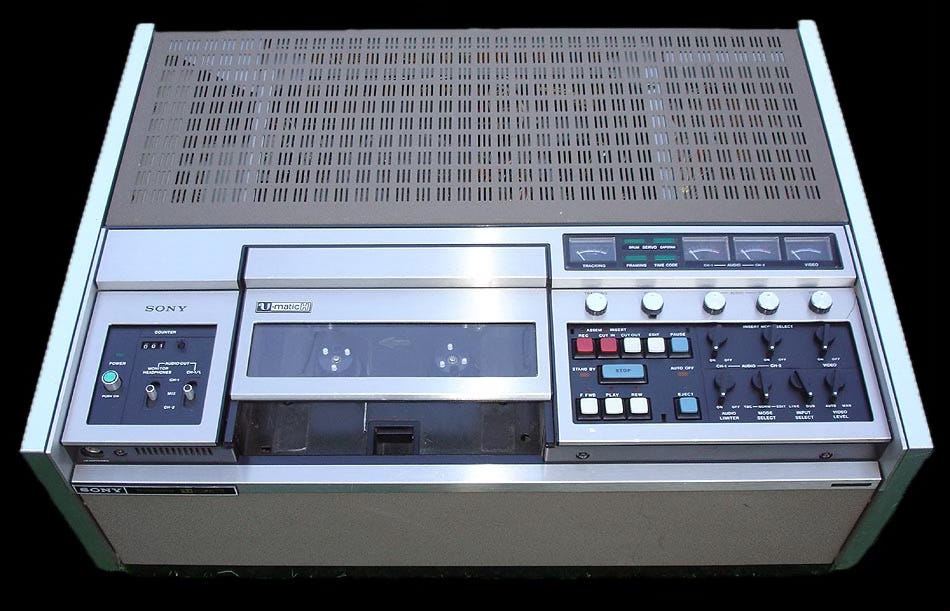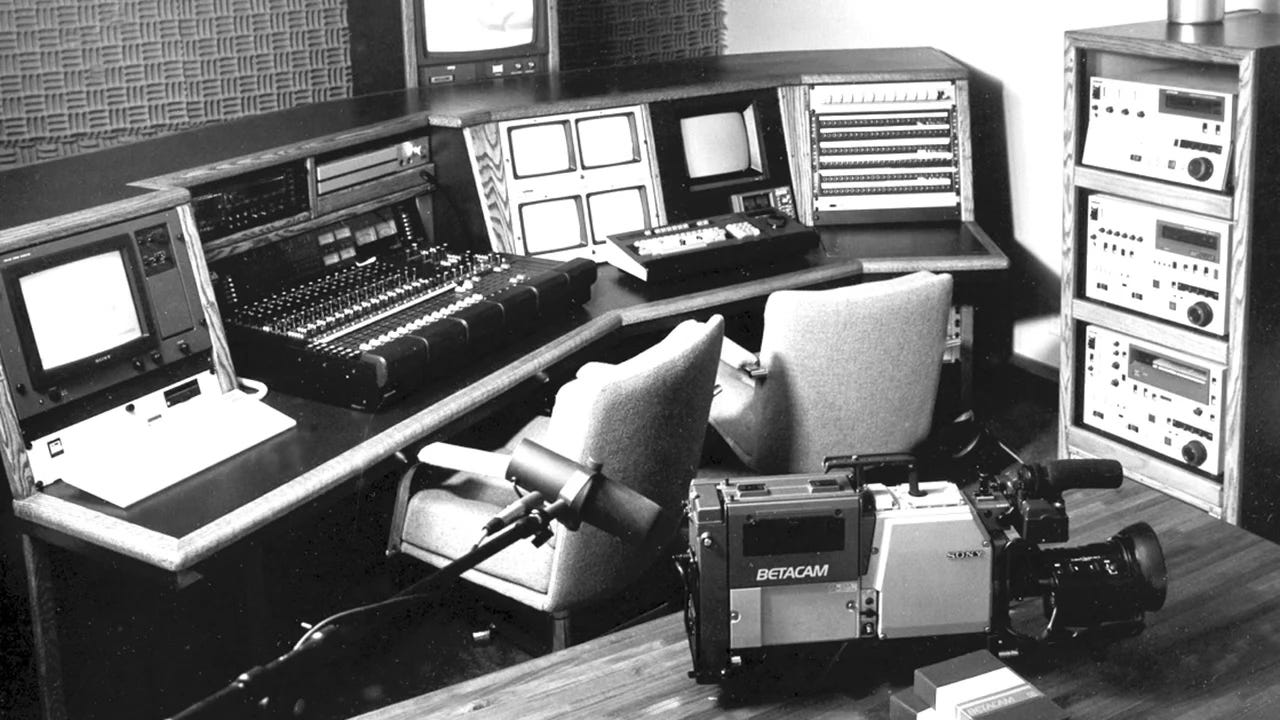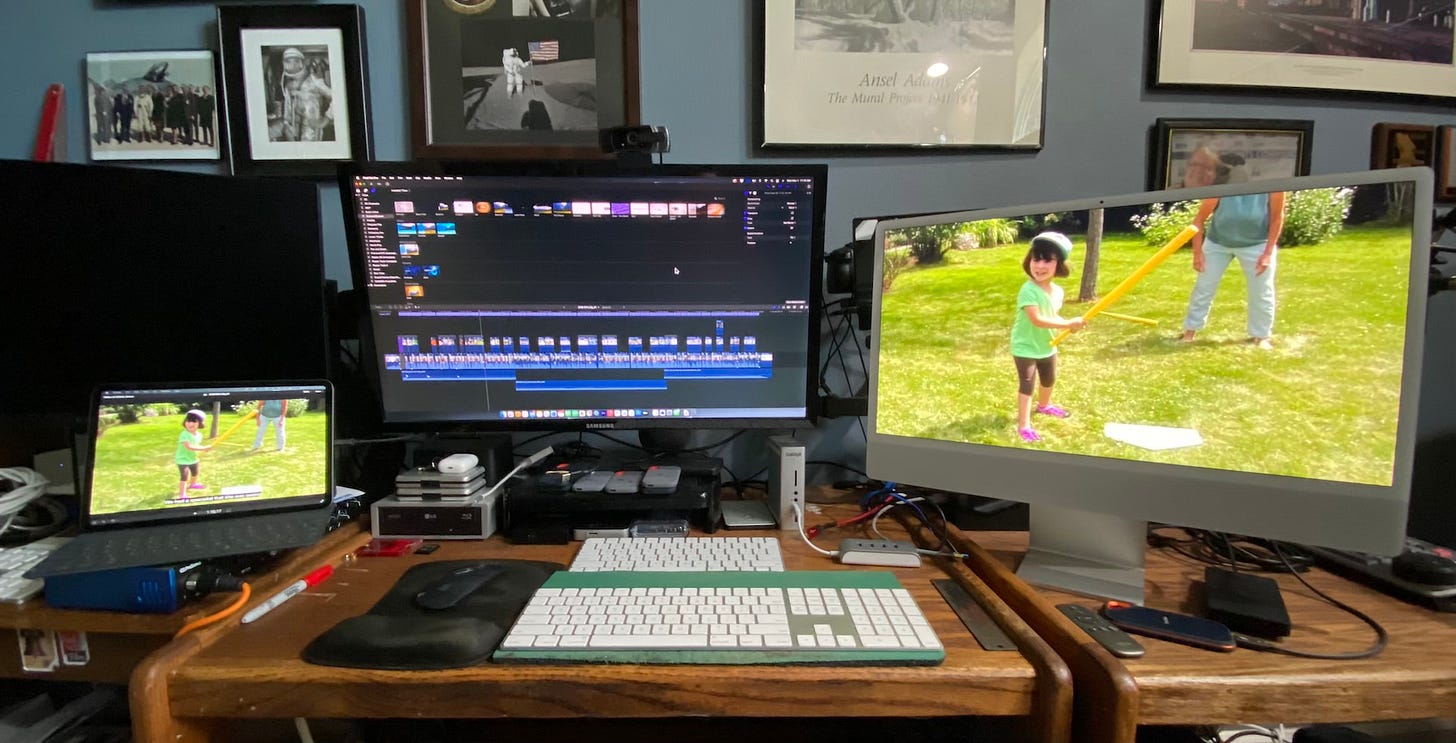The Video Editor
We have come a long way
In the early 1970s, I used video equipment in high school and college. My first video equipment was a Sony 1/2-inch black and white reel-to-reel recorder and a vidicon tube camera. Since the video recorder lacked flying erase heads, we had to crash edit the scenes together. We had a 1/2-inch portable recorder with a tube camera and some tube studio cameras with a switcher and recorder. I used all of these to produce this documentary. We simply crashed edited the segments together. To perform a voice-over overdub, I bypassed the audio erase head by threading the tape around it. Here’s part 1:
Editing Videotape in the Mid-70s
I find video editing to be one of the most satisfying jobs I can do. The key is to be extremely organized. When I first started as a NewsPhotographer/Editor at KCOY-TV, it was more stressful, primarily due to the short deadlines. However, an important lesson I learned early on was: “To make do with what you don’t have.” A skilled editor can make a mediocre photographer look good, while a poor editor can make a good photographer look bad.
KCOY had a Hitachi 3030 video camera and a JVC CR-4400 video recorder. To edit my footage, I connected the 4400 recorder to a JVC CR-5850 editing recorder. The 5850 had a built-in 5-second pre-roll when I hit edit. I would use a stopwatch to time the 4400 player scene. Then, I would backup the tape before the 5-second mark, play to the 5-second point, and hit the Edit button on the 5850, which would edit at 5 seconds later. We didn’t even have a player in our editing system. We added a player soon after, as it was putting a lot of wear on the 4400, but I still had to use the stopwatch method to edit. It wasn’t until we got a Sony BVU-200 edit system that I finally had machine-controlled editing with an edit controller.
1980s Videotape Editing
By the 1980s, computerized video editing had emerged, featuring dedicated editing consoles that interfaced with the video tape machines. These consoles simplified the control of the machines, allowing users to instruct them to perform edits. Various video tape formats were developed, including the already prevalent 3/4 inch format, 1 Inch Tape Type C, Sony Betacam, a professional version of 1/2 inch Beta tapes, and Panasonic MII, a professional version of 1/2 inch VHS. However, the equipment was expensive, and constructing an edit system required three VTRs—two for playback and one for recording edits. This was beyond the reach of independent video operators like myself, who were forced to rent time in edit rooms to assemble video programs. Edit rooms would cost over $100,000.
From 1985 to 1990, I owned a Sony Betacam BVP-3 tube video camera, primarily serving as a shooter rather than a video editor.
Nonlinear Video Editing
In the early 1990s, the first nonlinear edit systems were developed for offline editing. While the video quality was lower than broadcast standards, these systems were used for making edit decisions, which were then edited online.
I was called upon to edit a documentary on Route 66 for Pacific Communications. I would take the original tapes and edit them in a manner similar to offline tape editing. We successfully mastered the show on MII video tape.
Today, we edit videos online using nonlinear video editing software on computers and hard drives. Since 1995, I have worked from home, having built my own editing system with a Mac 9500, a Targa board, and 8 gigabytes of storage. This system offered approximately 40 minutes of standard definition video or 640 by 480 pixels of video resolution. At the time, the entire system cost me around $15,000, significantly less than the $60,000 required for a commercial system. With this system, I no longer had to pay $100 per hour to edit videos.
Today, I can edit videos with high-definition quality using any off-the-shelf Mac. We have come a long way. I have been able to maintain an independent career and avoid having a job most of my life.





Very interesting trace of the innovations that made your work possible.